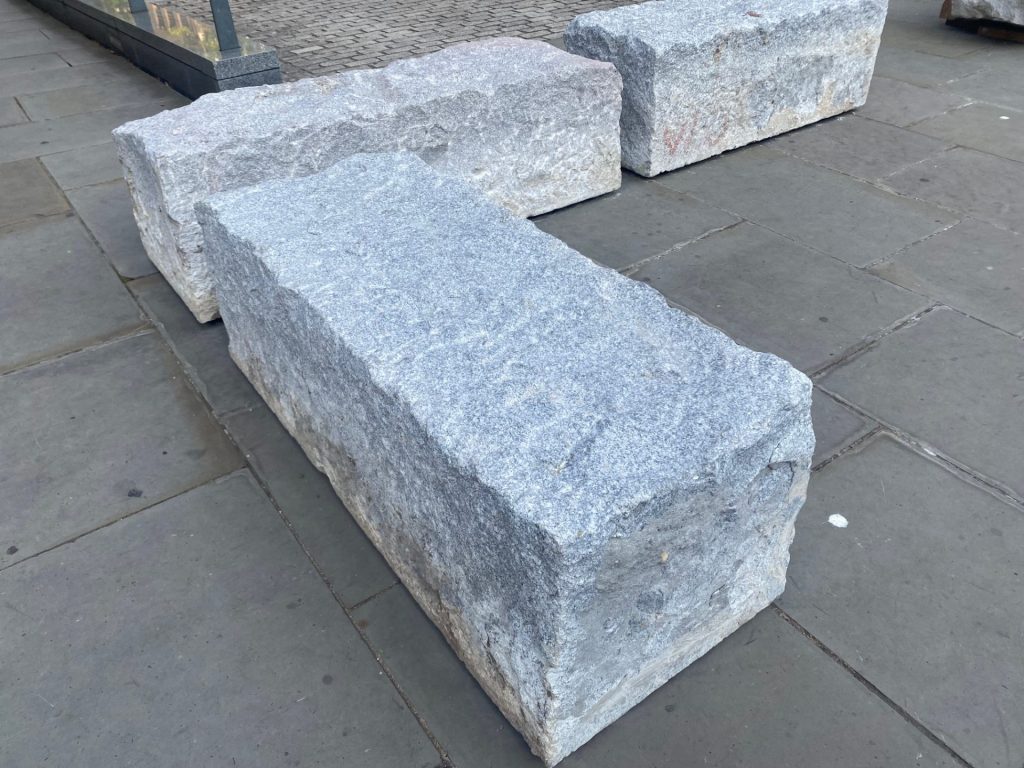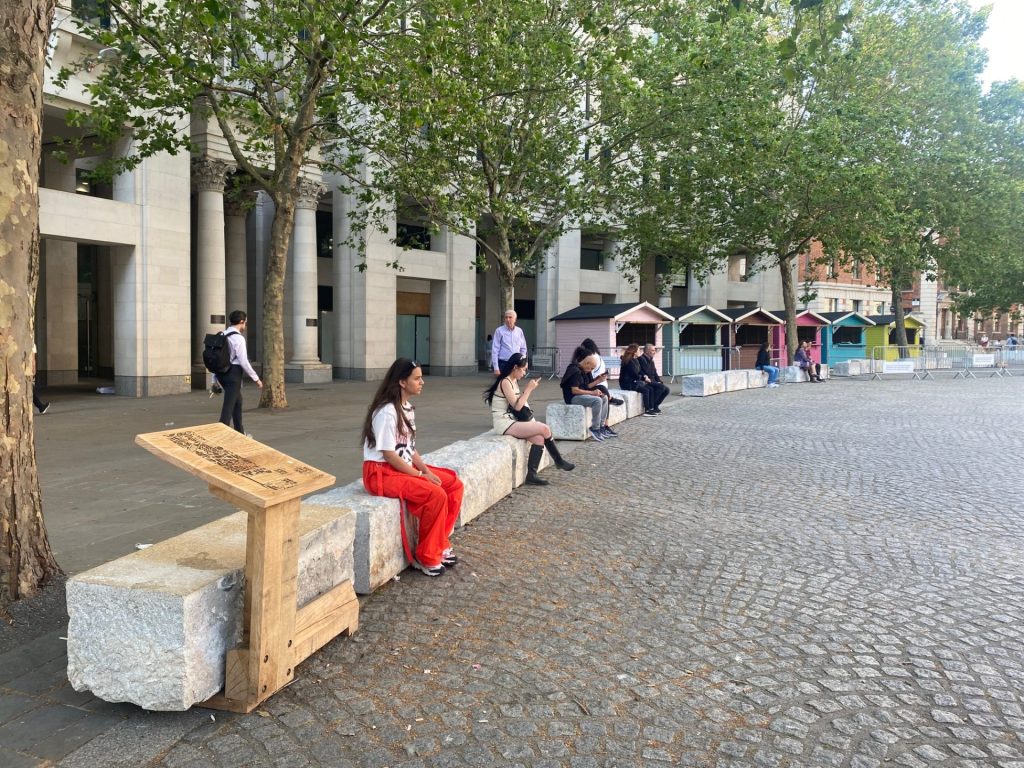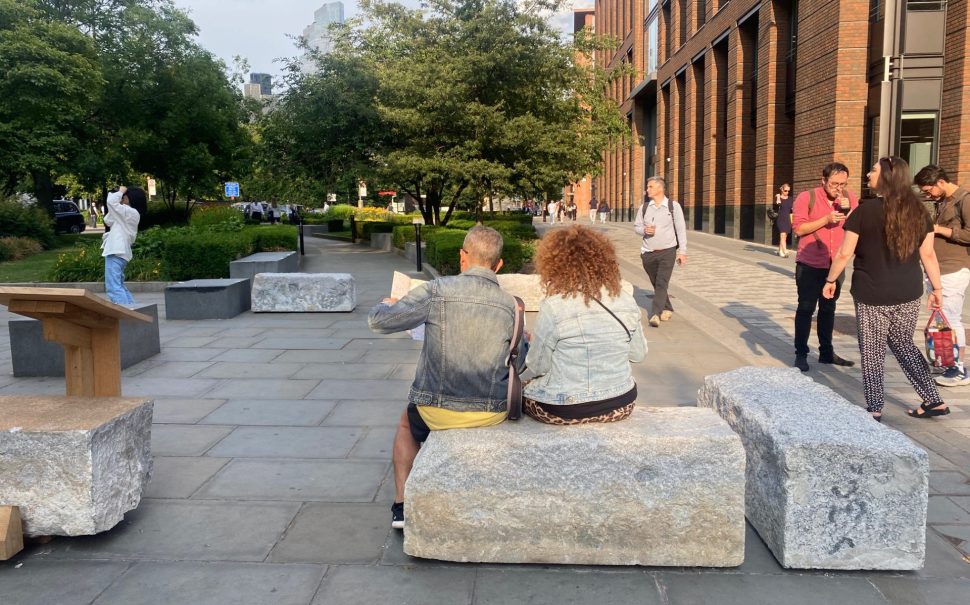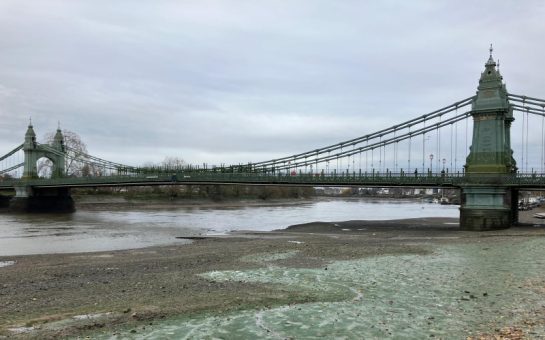A City of London’s reuse project has relocated 150-year-old Victoria Embankment stones to near famous landmarks in the capital.
Fifty-eight granite stones, weighing around one tonne each, were relocated from Victoria Embankment to seven different points in the city where tourists and passers-by can sit and enjoy historic landmarks around them.
The temporary project, ‘From Thames to Eternity”, was designed by architects Matthew Barnett Howland and Oliver Wilton from the University of London and CSK Architects.

According to the City of London, the aim of this project is to promote reuse of materials and circular economy in the built environment.
The stones come from the Thames river wall at Victoria Embankment, removed by Tideway as a part of the construction of the Thames Tideway Tunnel sewer project and gifted to the project by Westminster City Council.
Architect and project designer Oliver Wilton explained: “They needed to make connections to the old sewer which is in the Embankment, so they removed some small areas of the Thames River wall.
“Westminster City Council then decided that they were prepared to pass those on with no charge to public projects where they would be reused.”
Environmental sustainability
Wilton and Barnett Howland seized the opportunity to build up a stone project that aligns with their interests and previous work on circularity and environmental sustainability, working in partnership with the City of London.
The stones were selected by the designers, who developed placement plans across several sites in the City.
Wilton said: “There are a lot of sites in the city that could work quite well for this project, and we were keen to use a series of sites that formed a route from the river to the heart of the City of London as it echoes the journey of the stones and this route, from the Millennium Bridge, is one of the major routes into the City for visitors.”
Chairman of the City of London’s Streets and Walkways Committee, Graham Packham, said: “The Thames to Eternity project is a brilliant initiative that combines our commitment to delivering a thriving arts and culture scene for all to enjoy, with our goals for a sustainable, net-zero City by 2040.”
This initiative includes reusable, durable and sustainable key components, which took part in the city’s cultural and artistic heritage.
Wilton added: “In recent times, people often link sustainable architecture to things like timber and plant-based materials, but stone can be great too because it is a made-material, zero carbon in the ground.
“It is not renewable but there is plenty of it and it has a very long life span.”

Stone history
The city has a long history of stone use, dating back to Roman times, but it is built on clay and gravel and doesn’t contain any native stones.
Stones used in London were brought in from other places, such as Cornwall and Scotland, which according to Wilton makes them even more ‘precious’ for exploitation and reuse within London.
The designers chose to keep the ‘raw’ aspect and original size of the stones in order to protect their cultural value and maintain their full potential for future projects.
The stones are already part of a future relocation plan to the permanent King Edward Public Square, which is due to be built to the north of St Paul’s Cathedral.
According to plans approved this month by the City of London for the new public square, the stones will form a “stepped line” running across the site.





